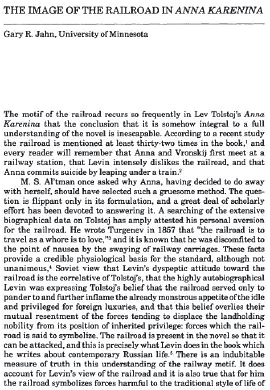PROBLEM: Sometimes you will be assigned to work with materials that an instructor has uploaded to a course Web site or has handed out in class. Complete publication information may not always be given for such sources. A PDF file or a hard-copy article, for instance, may have a title and an author's name but give no other information. Or a video may not include information about the creator or the date the video was created. When you write a paper using such sources, how should you cite them in your own work?
example: Perhaps your instructor has included a PDF file of an article in a collection of readings on the course Web site (see image at right). You are writing a paper in which you use a passage from the work.
strategy: Look through section 56b for a model that matches the type of source you're working with. Is it an article? A chapter from a book? A photograph? A video? The model or models you find will give you an idea of the information you need to gather about the source. The usual required information is (1) the author or creator, (2) the title, (3) the date the work was published or created, (4) the date you accessed the source (usually only for sources on the Web), and (5) the medium in which the source was presented (see p. 602).
citation: For your citation, you can give only as much of the required information as you can find in the source. In this example, you know the source is an article with an author and a title, and you accessed it as a PDF file. So you can combine items 13a (basic format for an article) and 71 (digital file) to create the works cited entry for the source. Since you can't tell when the article was published, you should use “N.d.” for “No date.” At the end of your citation, it is a good idea to include the description “Course materials” and supplementary information about the course (such as its title or number and the term).
note: When in doubt about how much information to include or where to find it, consult your instructor.



